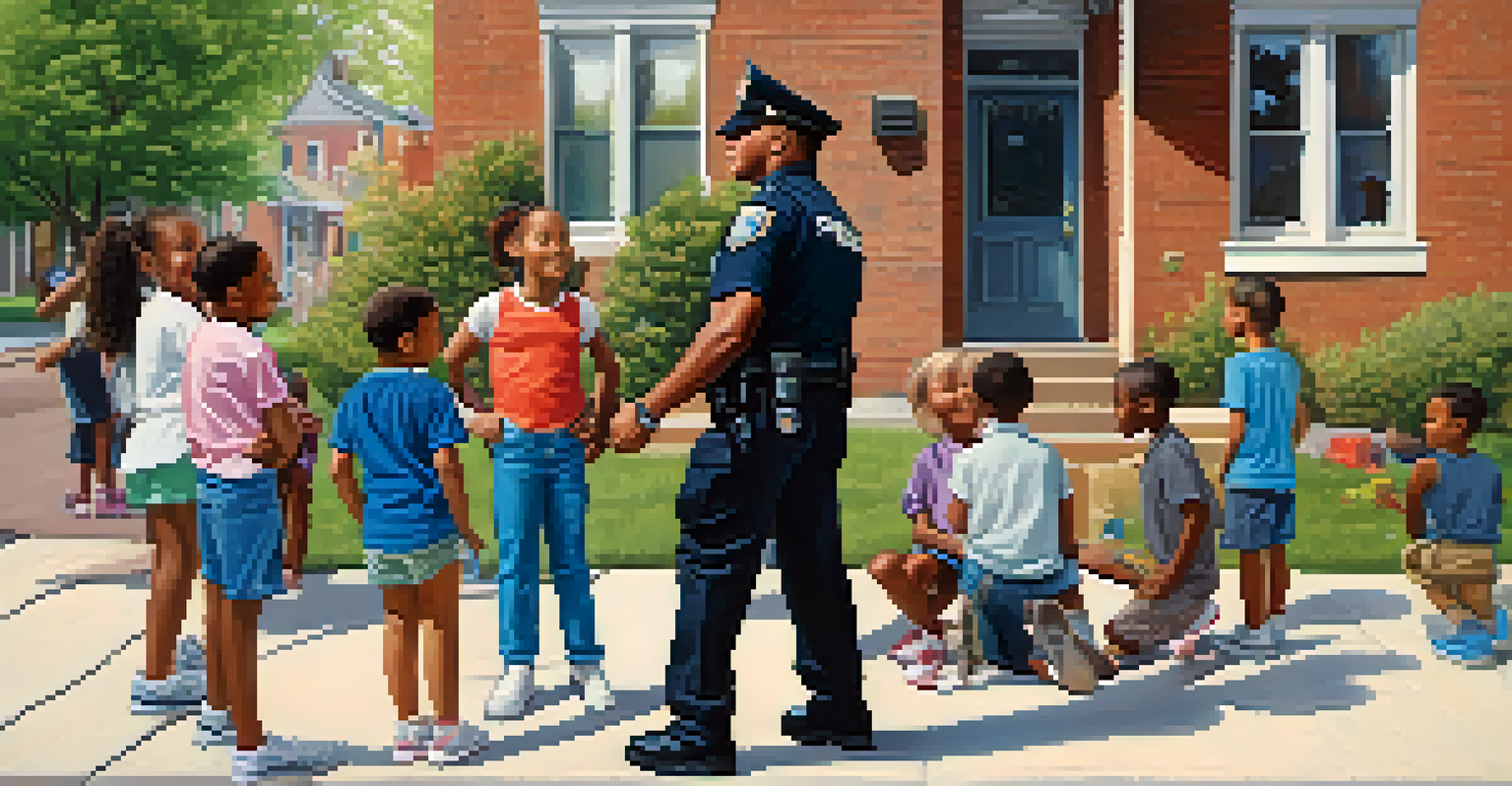Understanding Detroit's Crime Rate Trends: A Comprehensive Study

Overview of Detroit's Crime Rate History and Trends
Detroit has a complex history when it comes to crime rates, often influenced by economic, social, and political factors. Over the decades, the city has faced significant challenges, including industrial decline and population loss, which have contributed to its crime statistics. Understanding these historical trends is crucial for contextualizing the current situation and developing strategies for improvement.
Crime is not a problem of the police. It is a problem of the community.
In the 1970s and 1980s, Detroit experienced soaring crime rates, particularly violent crimes, as the city grappled with economic downturns. The subsequent years saw various law enforcement initiatives aimed at curbing crime, which led to fluctuations in crime rates. By examining these historical points, we can better understand the cyclical nature of crime in urban areas like Detroit.
Recent years have shown some promising signs, with reports indicating a gradual decrease in certain crime categories. This decline suggests that ongoing community engagement and innovative policing strategies are making a difference. However, it’s essential to remain cautious and recognize that crime trends can shift rapidly based on multiple factors.
Factors Influencing Crime Rates in Detroit
Several factors play a critical role in influencing crime rates in Detroit, including socioeconomic conditions, education levels, and community resources. High unemployment rates and poverty can lead to increased crime, as individuals may turn to illegal activities out of desperation. Understanding these underlying issues is key to addressing the root causes of crime in the city.

Moreover, the availability of educational opportunities and community programs can significantly impact crime rates. Areas with robust support systems often see lower crime rates, as residents have access to resources that promote stability and growth. This highlights the importance of investing in education and community services to foster safer neighborhoods.
Crime Rates Reflect Socioeconomic Struggles
Detroit's crime rates are significantly influenced by socioeconomic conditions, including poverty and education levels.
Additionally, policing strategies and community relationships with law enforcement can either mitigate or exacerbate crime trends. A transparent and cooperative approach between the police and community members can lead to more effective crime prevention tactics. Therefore, fostering trust is essential for creating a safer environment in Detroit.
Current Crime Rate Statistics and Analysis
As of recent reports, Detroit's crime statistics reveal a mixed picture, with some categories showing improvement while others remain concerning. For instance, while violent crimes such as homicides have seen a reduction, property crimes still pose a significant challenge for residents. This duality in trends emphasizes the need for focused strategies to tackle specific crime issues.
The best way to reduce crime is to strengthen the community.
Analyzing these statistics requires looking beyond the numbers; it’s about understanding the human impact behind them. Each statistic represents a person or community affected by crime, making it imperative to approach these figures with empathy. This human-centric perspective can drive more effective interventions and community support.
Furthermore, comparing Detroit's crime rates with national averages can provide valuable context. While the city has made strides in reducing crime, it still faces challenges that are often not as prevalent in other urban areas. This comparison can help stakeholders identify best practices from other cities that could be adapted to Detroit's unique circumstances.
Community Initiatives Addressing Crime
Community initiatives play an essential role in addressing crime in Detroit. Programs that focus on youth engagement, job training, and mentorship have proven effective in reducing crime by providing alternatives to criminal behavior. When young people feel supported and have opportunities, they are less likely to engage in illegal activities.
Local organizations are also working tirelessly to bridge the gap between the community and law enforcement. Initiatives that promote dialogue and collaboration help build trust and empower residents to take an active role in crime prevention. This community-driven approach fosters a sense of ownership and responsibility among citizens.
Community Initiatives Foster Safety
Local programs focusing on youth engagement and collaboration with law enforcement are crucial in reducing crime and building trust.
Moreover, these initiatives often rely on community resources and volunteers, showcasing the power of collective action. When individuals come together to support their neighborhoods, they create a safer environment for everyone. The ripple effect of these positive actions can lead to lasting change in crime rates.
Role of Law Enforcement in Crime Reduction
Law enforcement in Detroit has undergone significant changes in recent years, focusing on building relationships with the community to enhance safety. Modern policing strategies emphasize community policing, where officers work closely with residents to address their concerns and develop tailored solutions. This approach fosters trust and encourages cooperation between law enforcement and the community.
Training and accountability within the police force have also become paramount in reducing crime effectively. Officers are now more equipped to handle situations with a focus on de-escalation and community engagement. This shift is crucial for improving public perception of law enforcement and encouraging community members to report crimes.
Additionally, the use of technology, such as crime mapping and data analysis, has greatly improved policing efforts. By identifying crime hotspots and understanding patterns, law enforcement can allocate resources more effectively. This strategic approach enables a proactive rather than reactive response to crime, ultimately contributing to a safer Detroit.
Impact of Socioeconomic Factors on Crime Rate
Socioeconomic factors are deeply intertwined with crime rates in Detroit, influencing everything from job availability to education levels. Areas with high poverty rates often experience increased crime, as limited economic opportunities lead to desperation. Addressing these socioeconomic disparities is critical for reducing crime in the long term.
Furthermore, education plays a significant role in shaping communities. Higher levels of education are linked to lower crime rates, as individuals are better equipped to secure stable employment and contribute positively to society. Investing in education and vocational training can yield substantial benefits in crime reduction.
Innovative Policing Enhances Safety
Modern policing strategies, including community engagement and data-driven approaches, are vital for addressing crime effectively in Detroit.
Finally, access to healthcare and mental health services can also impact crime rates. Communities that prioritize overall well-being tend to see lower crime, as individuals have the support they need to cope with life’s challenges. This holistic approach to community health can significantly contribute to a safer Detroit.
Future of Crime Rates in Detroit: Looking Ahead
As we look to the future, the trajectory of crime rates in Detroit will depend on the continued collaboration between community members, law enforcement, and local organizations. Sustained efforts to address underlying socioeconomic issues and promote community engagement are vital for long-term crime reduction. This collaborative approach can create a more resilient city that can adapt to challenges.
Emerging technologies and innovative policing strategies also hold promise for the future. By embracing data-driven approaches and community input, Detroit can develop effective crime prevention tactics that are responsive to the needs of its residents. This forward-thinking mindset is essential for building a safer environment.

Ultimately, the future of crime rates in Detroit is not predetermined; it is shaped by the actions and choices of its residents and leaders. With a commitment to collaboration, education, and community support, there is hope for a brighter and safer future for the city.